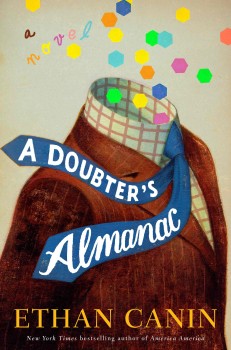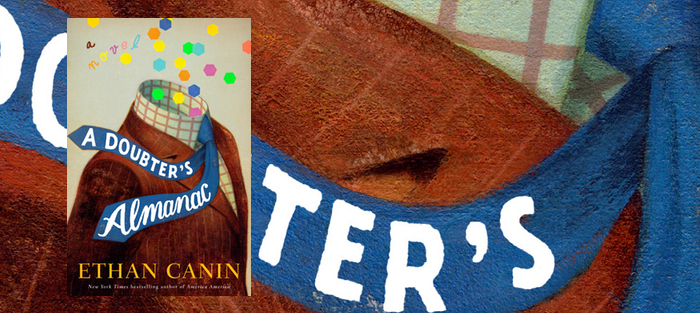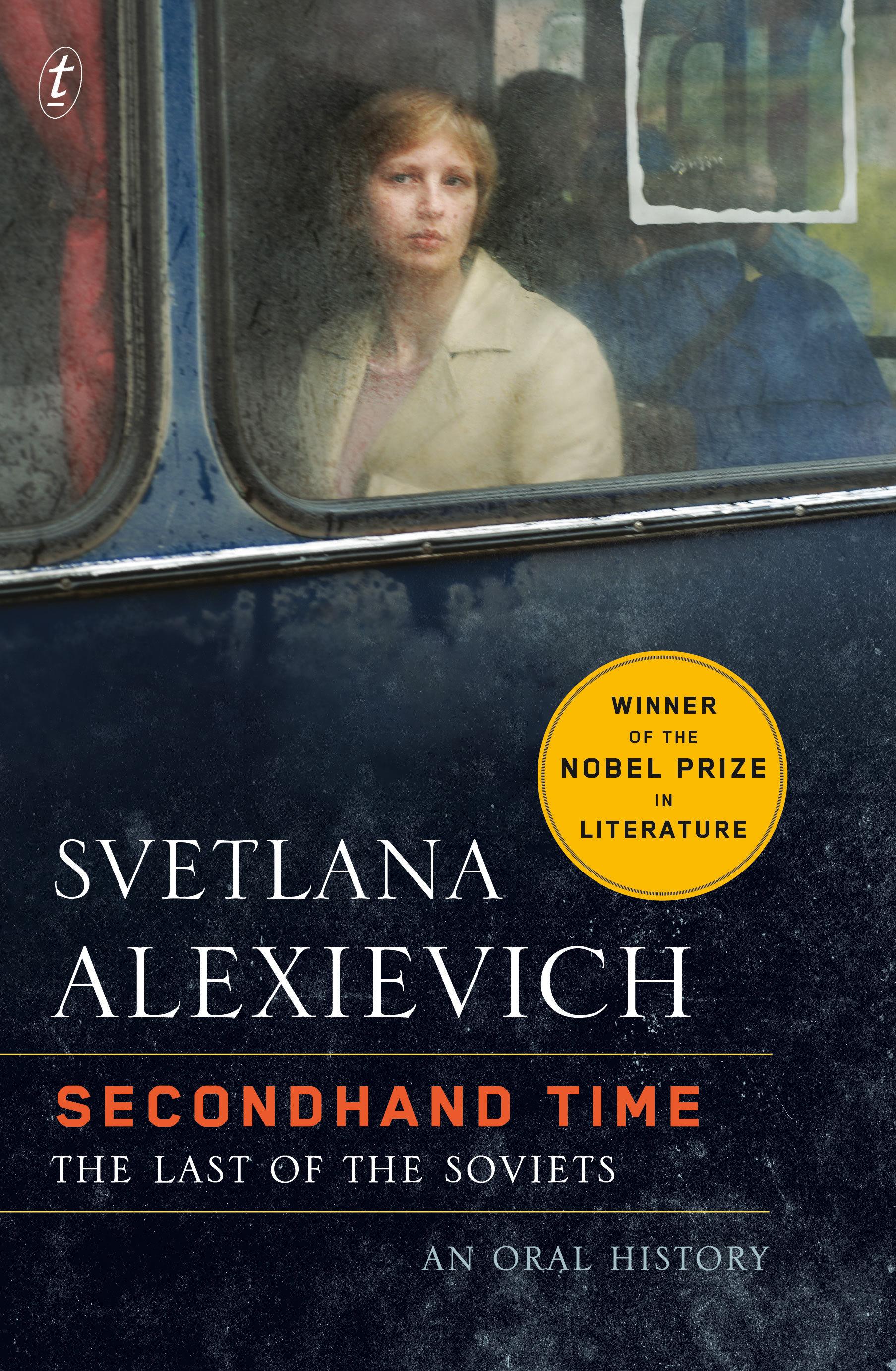Before he becomes a famous mathematician (and an infamous one, and an incapacitated one), Milo Andret is a boy growing up on Lake Huron, where the color of the water is “closer to the stormy Atlantic hues of Lake Superior than to the tranquil, layered turquoise of Lake Michigan, which lapped at the tourist beaches on the far side of the state.” Milo, the main character of Ethan Canin’s new novel, A Doubter’s Almanac, which has recently been released by Random House, spends hours in the woods, never quite losing himself (because he always knows exactly where he is), but still losing himself in a sense—losing oneself requiring an absence of mind that requires a certain presence and confidence in where and who one is.
The book is thick—literally and figuratively—with love, both romantic and familial; the natural world; and the world of academics. And, of course, mathematics. In fact, the book is exuberantly mathematical: one character’s nose, which has a “tiny bend” in it, earns the footnote, “For those who care for an approximation of the tilt and bend: for y = 0 … 180, x = 170e -.00016(y-23)^2 – 9.4e -.0025(y-47)^2.” Sure, there’s a narrative smile here. But we’re also sure that this equation is accurate, offered with a sort of wide-eyed plain-spokenness that, in the context of all the brilliance accounted for in this book, feels perfectly simple and childlike.
I should add that A Doubter’s Almanac is not awash in equations or formulas, and that my example here represents one of few actual figures. What receives the most attention are the ideas of mathematics, the movement and strangeness and complexity of its invisible world. I have never encountered prose that renders this world so beautifully: the field ceases to be a language and series of figures we don’t understand and becomes a subject for which we have a nearly physical understanding. Take, for example, how a rapidly fluctuating derivative is described as that “which fluttered around the thing itself like the wind around a truck, full of gusts and eddies.”
 Even what is not clearly mathematical is seen through that lens: the view from the basement of Milo’s Berkeley apartment is in some ways “akin to the maple and beech forest of his childhood. The sense of a constrained world that nonetheless suggested a borderless one. His first weeks, he spent hours staring through the high frames of glass. Constant sameness. Constant newness. The swift legs of pedestrians scissoring a wobbling flame of sun.”
Even what is not clearly mathematical is seen through that lens: the view from the basement of Milo’s Berkeley apartment is in some ways “akin to the maple and beech forest of his childhood. The sense of a constrained world that nonetheless suggested a borderless one. His first weeks, he spent hours staring through the high frames of glass. Constant sameness. Constant newness. The swift legs of pedestrians scissoring a wobbling flame of sun.”
Milo’s skill at mathematics is realized late—relatively speaking, that is; the novel repeatedly points out that most mathematicians make their marks on the discipline at a young age. Milo attends graduate school at Berkeley, where he meets a woman with whom he has a relationship and also makes an enemy. He proves a difficult and famous conjecture, which lands him at Princeton, where he meets more women and makes more enemies and tries to prove a yet more difficult and more famous conjecture. He also marries and has a family.
This may feel like a rapid plot overview. I assure you, however, that I have given away relatively little—everything I’ve accounted for up to this point is described in the first three-eighths of the novel. The other five-eighths (I hope Milo would appreciate my precision) is about the rest of his life—which is to say, the decades in which he is an unsuccessful mathematician, an unsuccessful husband, and an unsuccessful father. Our narrator, who both knows Milo well and is “forced to rethink many of the things [he’d] believed about him,” says, “this is part of why I tell this story—to understand the truth about him, including the idea that he can’t entirely be blamed for what he did to us, and for what he did to himself, and for what happened to him.” And of course, we can’t understand Milo without understanding what he thinks about. Topology is Milo’s specialty, a subfield in mathematics in which
men were no longer bound by symbology but instead spent their days constructing complicated hypothetical shapes that had never before been seen—nor likely imagined—by the human mind. Topologists built undrawable figures in their imaginations, then twisted and folded them. They devoted their time to inventing a cosmology in which the world as it was known—the world of earth and sea and sky—was no more than the three-dimensional rendering of an infinitely higher-dimensional space, much as a two-dimensional movie screen might appear to hold a three-dimensional tableau. In the new paradigm, sensory experience counted for nothing. Pure mathematical ingenuity—the ability to ignore common understanding, to construct a world solely from derived principles—had begun to supersede empiricism.
The concepts that both form and extend beyond the visible may seem to offer Godlike power to a man as skilled as Milo. But somehow we are not surprised to find that the world of topology has just as many pitfalls as the shared realm in which we live. The more time Milo spends as a mathematician, the more he feels, and is agonized by, his limitations: “We’re the stooges,” he admits, later in his career. “The fix is in. We can’t ever find what we’re looking for.”
In a sense this is true, and the book is largely driven by Milo’s disappointment, his hope that he could recover, and even surpass, the greatness he once knew. What makes this novel so remarkable, then, is how Canin handles the slow-motion dissolution of Milo’s life. There’s a generosity and carefulness here that never feels precious; the question of whether or not we should like Milo is cast aside in favor of the much more interesting question of who he is. The easy answer is obvious: Milo is brilliant and selfish and obsessed and will never be satisfied. Or maybe the answer is not so obvious. As A Doubter’s Almanac tells us, mathematicians enjoy “an inquiry into the apparently obvious,” and if there is one thing the novel wants to make clear, it’s that there’s a mystery at the heart of the simplest answers—and if I may extrapolate a bit, it’s that that mystery is accessible to each of us in different ways. At one point, the narrator breaks into the story of the famous mathematician Srinivasa Ramanujan, who at the university level failed “every single course that wasn’t mathematics.” Then the narrator says this:
What can one say about this? That brilliance is just an obsessive kind of love? A man like Ramanujan looked only at what it pleased him to look at. As do most of us, I think. Einstein once said that God is subtle but not malicious, and I have to agree: success in mathematics is in good part a question of merely wanting badly enough to look… The actual sharpness of one’s vision might even be secondary to the mere love of looking.
A Doubter’s Almanac makes clear that no matter how blind we are in some ways, we are still able, in other ways, to see. So it is with Milo. So it is with the novel itself, which in a moment of perfect grace observes its inscrutably raw, desperately lost subject as a man who walks “around with his hands behind his back, his feet swinging wide, his head tilted back, like an Old World European skating on a pond.”






